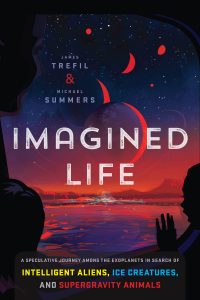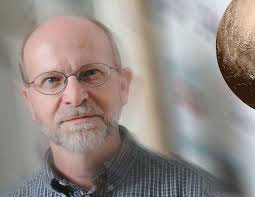 TAEM- Recently the current Administration, and NASA, announced that they have begun a push to put a man on the Moon and Mars in the very near future. This is very exciting news and it looks like we will be in the space race once again… We decided to reach out to George Mason University and get the intake on this event from them. There was none better to ask than Planetary Scientist Professor Michael Summers who we last interviewed in the December 2012 issue of our magazine.
TAEM- Recently the current Administration, and NASA, announced that they have begun a push to put a man on the Moon and Mars in the very near future. This is very exciting news and it looks like we will be in the space race once again… We decided to reach out to George Mason University and get the intake on this event from them. There was none better to ask than Planetary Scientist Professor Michael Summers who we last interviewed in the December 2012 issue of our magazine.
TAEM- Professor how did you feel when you had first heard this announcement?
MS- When I first heard the announcement that NASA was setting the goal of sending humans back to the moon to develop a sustainable presence, I felt excited that our country was giving human space exploration a high priority again. But at the same time that excitement was tempered by several concerns. I had, and still have, several worries about moving too fast with human exploration.
 First, we need to make sure we send humans into space safely. That means we can’t rush it. We need to take the time to understand the space environment and its hazards. Things like solar mass ejections can have lethal effects on humans unshielded in space on long duration missions. We need to better understand those dangers and how to mitigate them both on spacecraft and on habitations on the moon and Mars. We need to better understand how to predict and shield humans from space radiation, before we rush to send humans far away from Earth where help is much further away that a simply a deorbit. There will be no rescue missions to Mars in the near future.
First, we need to make sure we send humans into space safely. That means we can’t rush it. We need to take the time to understand the space environment and its hazards. Things like solar mass ejections can have lethal effects on humans unshielded in space on long duration missions. We need to better understand those dangers and how to mitigate them both on spacecraft and on habitations on the moon and Mars. We need to better understand how to predict and shield humans from space radiation, before we rush to send humans far away from Earth where help is much further away that a simply a deorbit. There will be no rescue missions to Mars in the near future.
Low gravity decreases bone mass, worsens eyesight, decreases mental acuity, and causes other physiological changes that we are just beginning to understand. Along the same lines, there are physiological effects of long duration missions that need to be better understood. We are certainly studying space health effects now, but we need to do much more.
It is also important to keep a balance between human and robotic space missions. Human space exploration is incredibly dangerous and expensive. But robotic exploration is, relatively speaking, much less so. And it is the robotic exploration that is the true reconnaissance of the moon and Mars that will set the stage for a human presence. We haven’t even brought samples of Mars’s surface to Earth for study yet. And that is just one of the essential things that can be done robotically to allow us to know what surface materials will be available on Mars for use in growing food, for making habitats, oxygen, and rocket propellant.
Also, I have serious concerns about taking human asteroid missions out of the equation. After the moon, we can explore the asteroids, develop habitats there, and harvest their resources, before going to Mars. Landing on an asteroid, and later leaving it, is much easier than landing on Mars and returning. That is because of the much lower gravity of the asteroids. And we believe that the asteroids have a much broader range of useful resources for human space exploration than will be available on the moon.
So a priority of human space exploration is important, but we need to do it carefully, taking small steps that we understand well as we go.
TAEM- As a Planetary Scientist this must have been a thrilling turn of events. What, if any, do you, or your University, have planned to contribute to this historical occasion?
 MS- It is indeed thrilling to contemplate the goals of sending humans back to the moon and Mars. Those will be the initial steps in developing the first space colonies and eventually the colonization of our entire solar system. Our children may see the first space cities!
MS- It is indeed thrilling to contemplate the goals of sending humans back to the moon and Mars. Those will be the initial steps in developing the first space colonies and eventually the colonization of our entire solar system. Our children may see the first space cities!
And there are almost unlimited ways that people can contribute to this vision. There are entire new industries that need to be developed, such as space manufacturing for taking all of the raw materials on the moon, Mars and the asteroids and turning them into food, oxygen and building materials. We need new developments in space robotics and AI for building turn-key habitats ready for when humans arrive. As noted above we have the new discipline of space medicine that is absolutely essential for human space exploration. We will need to re-invent much of medicine for the space environment. We need to develop the new discipline of space law – after all, who owns all of the resources in space? And much, much more: space art, space psychology, space philosophy, etc. Virtually anyone who is interested will be able to find a way to contribute to this new vision.
TAEM- If all goes as planned, and bases are set up on both these worlds, is there any sage advice that you can offer?
MS- Be careful! As noted by many astronauts – space is dangerous and unforgiving.
TAEM- With the possible discovery of water on the Moon, does this enhance the probability of a permanent installation there?
MS- Absolutely! We are certain that there is abundant water ice in the south polar region of the moon. We are not exactly sure of how much is there, but we know it is a lot. We are also certain that there is abundance water ice on Mars just meters underneath the surface. There may also be liquid water deeper underground. Again we don’t know how much, but it is much more than on the moon. There may be underground glaciers and lakes on Mars.
Liquid water is essential for life, at lease life that we understand on Earth. And water will be important for growing food, generating oxygen, and making rocket fuel, among other things. We don’t have the luxury of bringing the water with us from the Earth. Having water already there waiting for us is truly remarkable. We still seem to be taking that for granted. But if water wasn’t already there human space exploration would be vastly more difficult.
TAEM- What would you recommend if a base was established on the Luna surface for living quarters and protection for our astronauts? Is the possibility for ice caves or lava tubes in your recommendations?
MS- Yes, lava tubes are getting a great deal of attention as potential habitats, for both on the moon and Mars. Some appear to be partially collapsed, but others may be large and still open. They have the potential for natural shielding from solar ultraviolet radiation, solar wind particles, and meteorites. So lave tubes will need to be explored on both worlds to determine their characteristics and accessibility. The down side is that if we use them as habitats, we have little choice where the habitats will be located. That might make it more difficult to explore other interesting regions far away from the lava tubes. My guess is that they will form one type of locale for habitats, but other types will be needed as well. Perhaps structurally sound domes that can be covered with layers of soil could provide sufficient shielding for small communities as well.
TAEM- Would these recommendations also apply to Mars?
MS- Yes, see above.
 TAEM- Should bases be established on these worlds what do you foresee that they can be used for, and where can we go from that point?
TAEM- Should bases be established on these worlds what do you foresee that they can be used for, and where can we go from that point?
MS- Initially the bases will be necessary as outposts for exploration. We need to understand the environments of both the moon and Mars extremely well before colonization. We also need to explore for resources that can be used by humans. My sense is that there are vast resources, but we need to know their form and availability. Those two things, understanding the new environments, and mapping resources, are the first steps before we do much more. And that will take time. The use of drones will speed it up. We can use drones to explore underground caves and lava tubes. And there are various types of rovers that can explore the surface of the moon. We have entire new worlds to learn about and it will take time.
TAEM- Would the exploration of other moons in our galaxy be the next logical step for our reach into this new frontier, and what about Exo-planets in the distant future?
MS- That appears to be something that will be far into the future. I would see the exploration of the other nine planets and the hundreds of other moons in our solar system over the next few centuries. Then there are the millions of asteroids, the hundred thousand or so Kuiper Belt Objects, and the trillions of comets in our solar system. We will probably have enough resources in our solar system to sustain humanity for millions of years.
But if not, then there are the unimaginably large numbers of exoplanets that are much more diverse than the planets we’ve found in our solar system. Probably there are tens of moons for every exoplanet. The numbers are mind numbing. I suspect we will have many surprises before we begin to colonize exoplanets. So I can’t even guess what would be the next logical step beyond our solar system.
TAEM- We’ve also just learned that you will shortly have a new book published. Please tell all our readers about this great news.
MS- Yes, my co-author Jim Trefil and I published a book entitled “Exoplanets” published by Smithsonian Books last year where we tried to show the average reader the astonishing discoveries that have been made about planets outside of our solar system. This new book, “Imagined Life” is a survey of what types of life would be possible on those exoplanets. We discuss everything from simple life such as bacteria to super-advanced civilizations. We try to answer the question: Given the types of exoplanets that have been discovered, what kinds of life would be possible there yet consistent with the laws of physics and chemistry. Imagined Life will be released September 17 and is also published by Smithsonian Books. Both are available on Amazon.com.
TAEM- Professor it has been a pleasure talking to you again, and I look forward to seeing your new book in print and I will urge all of our readers to purchase a copy when it appears on the bookshelves. We wish you much luck and hope to visit you again in the near future.
TAEM
Please share the story on Facebook, or donate to support our efforts!
